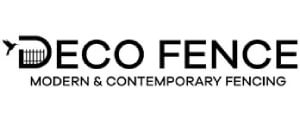Chain Link Fence Removal: Ensuring Privacy and Safety
Removing a chain link fence may seem like a daunting task, but it can significantly enhance your property’s privacy and safety. Whether you’re looking to replace the fence with a more secure option or just want an unobstructed view, understanding the benefits and challenges of removing a chain link fence is crucial. This guide will help you navigate through the process, ensuring that you make informed decisions about maintaining the security and aesthetic appeal of your property.
The Importance of Removing Chain Link Fences
There are several reasons why homeowners choose chain link fence removal. First, these fences may not provide the level of privacy some homeowners desire. Second, they can become an eyesore if they start rusting or sagging over time. Lastly, removing a chain link fence allows for landscaping changes that can improve both aesthetics and property value.
Benefits of Enhanced Privacy and Safety
When you opt for chain link fence removal, you open up possibilities for better privacy solutions. Wooden or vinyl fences offer solid barriers that keep prying eyes at bay. Additionally, modern fencing options come with added security features such as locks and sensors. These enhancements ensure that your family and belongings remain safe from external threats.
Common Challenges in Fence Removal
One of the primary challenges of removing a chain link fence is dealing with the concrete footings. These anchor the posts securely in place, making them difficult to extract without proper tools. Another issue is ensuring that the surrounding landscape is not damaged during the process. Therefore, planning and precision are key when undertaking this project.
Steps to Successfully Remove a Chain Link Fence
- Assess the entire length of the fence to identify all necessary points of removal.
- Use bolt cutters to detach the metal links from the posts carefully.
- Loosen and remove any top rails if present, as this will facilitate post removal.
- Excavate around each post to expose the concrete footings.
- Lift out each post with its footing using leverage tools like pry bars.
- Dispose of materials responsibly by recycling metal parts when possible.
Best Practices for Fence Disposal
After removing your chain link fence, it’s important to dispose of the materials properly. Scrap metal facilities often accept metal components for recycling, which is both environmentally friendly and potentially profitable. For the concrete, consider breaking it into smaller pieces to use as filler material for other projects around your property.
Understanding Industry Standards for Fencing
Fencing standards vary based on location and purpose. It’s important to comply with local zoning laws that dictate the height and type of fence allowed in residential areas. Non-compliance can result in fines or mandatory alterations. Always check local regulations before replacing or installing a new fence.
Cost Considerations When Replacing Fences
The cost of replacing a chain link fence depends largely on the materials chosen. Wooden fences, while more expensive than chain link, offer greater durability and aesthetic appeal. Vinyl is another popular choice due to its low maintenance requirements. Remember to budget for additional expenses such as labor costs and permit fees if required.
Your Next Steps Toward Improved Privacy
If you’re considering upgrading from a chain link fence, explore options that meet both your aesthetic preferences and security needs. Reach out to DFC Fencing today for expert advice tailored to your specific situation. Located in Monterey Park, CA, we pride ourselves on offering top-tier services designed to fit every budget. Call us at (626) 249-3277 to discuss how we can assist you in enhancing your property’s value and protection.

